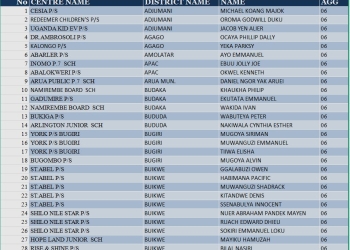 A new report has revealed significant shifts in media consumption patterns among Ugandans, with traditional platforms like radio and television facing increasing competition from digital and on-demand services.
A new report has revealed significant shifts in media consumption patterns among Ugandans, with traditional platforms like radio and television facing increasing competition from digital and on-demand services.
The preliminary results from the 2024 Establishment Survey, released by IPSOS and the National Audience Measurement Survey Technical Research Team (NAMS TRT), highlight the evolving media landscape in Uganda.
“Radio, which has long been the dominant platform for Ugandans, is now facing a decline. It’s no longer the king of the airwaves,” said Ms. Nanzala Mwaura, IPSOS Uganda Country Manager.
According to the survey, radio listenership in Uganda has dropped to 70%, a return to levels seen before the rapid growth of digital platforms.
Ms. Mwaura noted that radio is still important, but newer media formats are changing the way people engage with content. “The challenge now is to understand why people are shifting and how to respond to this change.”
The rise of internet-based platforms, particularly music-on-demand services like YouTube Music, Spotify, and Apple Music, is a major factor contributing to the decline of radio.
“People no longer need to wait for a DJ to play their favourite songs,” Ms. Mwaura explained. “Music on demand is a game-changer, especially for younger audiences who prefer control over their listening habits.”
The generational shift is also evident in the data, with younger audiences moving away from traditional radio and turning to digital media for both music and entertainment.
While radio is facing challenges, television is maintaining a steady audience, although its growth has been stagnant. On-demand video services are also vying for viewers’ time.

Print media is also feeling the effects of digitalization, with newspapers struggling to maintain relevance as more Ugandans turn to digital news sources.
Despite the challenges facing traditional media, the report highlighted that local content still plays a significant role in engaging Ugandans.
“Understanding these demographic differences is crucial for media owners and advertisers,” Ms. Mwaura emphasized. “By profiling your audience correctly, you can better tailor your content to suit their consumption habits. The key is to adapt and innovate to stay relevant.”
The survey also noted significant differences in internet usage across different regions, with urban areas showing higher penetration of digital platforms.
The report found that younger people, particularly those aged 15-35, are the main consumers of digital media, while older audiences still rely heavily on traditional media formats like radio and TV.
The 2024 IPSOS Uganda survey paints a clear picture of the evolving media landscape. While traditional media like radio and TV are still widely consumed, they face significant competition from digital content, which is rapidly gaining ground, particularly among younger audiences.
For media owners and advertisers, the challenge is to adapt to this changing environment by understanding audience preferences and crafting content that engages both traditional and digital-savvy consumers.
“Media consumption is no longer simple,” Ms. Mwaura noted. “It’s complex, and the key to success lies in understanding how audiences interact with different platforms and finding ways to meet their evolving needs.”
Ms. Mwaura also highlighted the core objective of the NAMS TRT, which is to build a media currency that will be used to stabilize the media buying process and maximize the return on investments for advertisers.
For media owners, the data is key to rate card setting, crafting offers for advertisers, and managing programming to attract audiences.

















